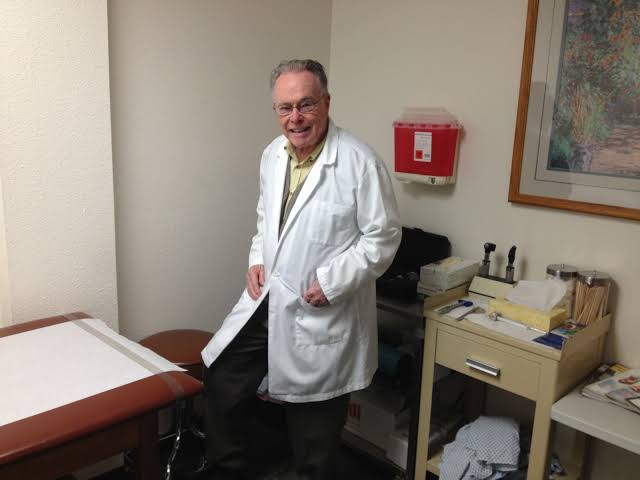It was February 17, 1976, and Dr. James K. Styner, an orthopedic surgeon, was flying his wife and four young children home to Lincoln, Nebraska. They had just attended a wedding in Los Angeles and were making the long journey back, crossing the wide open skies over the American Midwest in their small private plane. The sun was setting as they neared Nebraska, casting a golden hue over the landscape. But that warm glow would soon give way to a night that would alter the course of Styner’s life — and eventually, emergency medicine around the world.
The weather began to turn. Low, thin clouds crept in. Dr. Styner wasn’t certified to fly using instruments alone, so he chose to stay beneath the cloud cover, navigating by sight. But dusk was fading quickly. Disoriented and flying low in near darkness, he misjudged his altitude. The plane skimmed the surface of a pond, clipped treetops, and then slammed into the earth with terrifying force.
The aircraft was torn apart. The wings sheared off. The fuselage skidded violently across the ground, spinning more than two hundred feet before coming to a stop — battered, broken, but miraculously upright. A gaping hole yawned open on the right side of the plane, and the fuel tanks ruptured — but somehow, there was no fire.
When Dr. Styner came to, he was in agony. His chest was crushed, his face bloodied from smashing into the dashboard. But he was alive. His first thought wasn’t of his own pain — it was of his family. His wife, Charlene, was gone from her seat. And inside the mangled wreckage, his children were trapped.
Summoning strength through the haze of pain and shock, Dr. Styner stumbled into the cold Nebraska night. He knew the aircraft could ignite at any moment. He had to move fast. His instincts as a father kicked in. His instincts as a doctor followed close behind.
Chris, his ten-year-old son, had a broken arm but was awake. Three-year-old Kim had been sitting on Chris’s lap — she was unconscious from a blow to the head. Eight-year-old Rick had a deep head wound, also unconscious. Five-year-old Randy’s leg was pinned under the twisted remains of the plane. Somehow, Styner found the strength to carry Rick and Kim away to safety, then returned and dug out Randy with his bare hands. Chris, though injured, managed to crawl out on his own.
The family huddled in the freezing darkness, wrapped in whatever clothing they could gather from the scattered luggage. Temperatures were plummeting, and no help was coming. Dr. Styner ventured out twice into the darkness, calling for Charlene. On his third try, he found her — thrown hundreds of feet from the plane. She had died on impact.
Alone now with four injured children, Styner faced the impossible. He worried he had internal injuries. He was bleeding and exhausted. But he knew he had to act. He told Chris, honestly and with the strength only a father can summon in such moments: “If I don’t come back, don’t look for me. Just stay with your siblings and wait.”
And so, in the dead of night, with fractured ribs and a battered body, Dr. James Styner walked for miles until he saw headlights. A driver, startled by the sight of a bloodied man on the roadside, pulled over. Once he explained, they turned the car around and rushed back with him to rescue the children.
They drove to the nearest hospital — a small rural facility in Hebron, Nebraska. But when they arrived in the early hours, the doors were locked. The ER was empty, and only a nurse was on duty. She asked them to wait outside. It wasn’t until she saw the children’s condition that she let them in.
What followed deeply disturbed Dr. Styner. The medical staff, though well-meaning, were clearly unprepared for a trauma case of this magnitude. Rick, semi-conscious with a serious head injury, was mishandled. No one received IVs or urgent trauma care. It was chaos. In disbelief, Dr. Styner — battered, grieving, and exhausted — stepped in and took over the care of his own children.
He contacted a colleague in Lincoln, Dr. Bruce Miller, and arranged for air transport. It wasn’t until 14 hours after the crash that the Styner family received proper trauma care.
That night haunted Dr. Styner — not just because of the loss of his wife, or the sight of his children suffering, but because he realized something far more disturbing: he, an injured father in the middle of a field, gave better trauma care than a hospital.
It wasn’t the people that failed — it was the system.
That realization became a mission. Drawing inspiration from the ACLS (Advanced Cardiac Life Support) model, Dr. Styner and his colleagues created something new — the Advanced Trauma Life Support (ATLS) program. Its goal was simple yet revolutionary: to ensure that any medical professional, anywhere, could provide standardized, life-saving trauma care using a straightforward, reproducible approach — starting with the ABCs: airway, breathing, circulation.
By 1980, just four years after the crash, the American College of Surgeons adopted the ATLS program. And from there, it spread around the world. Today, more than a million healthcare professionals across over 80 countries have been trained in ATLS.
Despite the heartbreak of losing Charlene, all four children survived. Chris recovered from his broken forearm. Randy suffered a skull fracture and was in a coma for three days. Rick and Kim had traumatic brain injuries and spent seven days unconscious. But they all pulled through.
Out of the wreckage of that cold Nebraska night, a father’s pain turned into a global force for good. Dr. James K. Styner didn’t just survive the crash — he transformed it into a movement that has saved countless lives.
His story is not just about a plane crash. It’s about love, resilience, and the power of one person to change the world when they refuse to accept that “good enough” is good enough.




